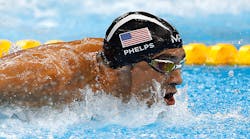As families sit glued to the television to watch the 2016 Olympic Games in Rio, the National Safety Council is encouraging parents to create a data-driven injury prevention plan for active kids.
According to NSC analysis of injury data, children ages 14 and younger comprise the age group with the highest percentage of serious injuries in gymnastics, soccer and swimming and diving – sports that routinely have high Olympic viewership ratings.
Children across the world will watch the Olympic Games in Rio de Janeiro, and many will start dreaming of becoming world-class athletes. Before embarking on that journey, the National Safety Council encourages parents to look at the data, because it can help them develop an injury prevention strategy so those dreams become reality.
“The Olympics are a testament to what we can accomplish when we work hard and dream big,” said Deborah A.P. Hersman, president and CEO of the National Safety Council. “Many of us learn life-long teamwork and leadership skills from playing sports. Being mindful of safety can ensure big dreams are not dashed by preventable injuries.”
More than 107,490 children are seriously injured each year playing soccer, and swimming and diving account for 93,177 injuries. More than 26,800 children are seriously injured in gymnastics-related incidents. Basketball has the highest number of serious injuries each year for all age groups, with 181,417 injuries involving children.
The National Safety Council recommends parents consider the following as they think about sports injury prevention:
- Make sure their children have regular sports physicals.
- Understand the signs of a concussion and learn how to prevent them.
- Prepare for an emergency by taking a first aid and CPR class.
- Check facilities for any potential safety hazards such as broken equipment or uneven surfaces.
- Keep children hydrated.

